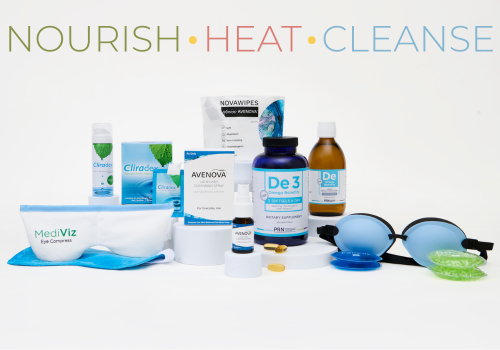TFOS DEWS III – What’s New?
Posted by EyePromise on Jun 19th 2025
The Tear Film & Ocular Surface Society (TFOS) has begun the staggered release of its newest Dry Eye Workshop (DEWS III) report. With the first DEWS report launching in 2007 followed by DEWS II in 2017, this latest edition – DEWS III – comes a bit earlier than the 10-year gap between DEWS I and II.
What’s DEWS III?
TFOS DEWS III is a comprehensive report focusing on “new and significant advances in the [identification], management, and classification” of occasional dry eye. Eighty experts from 18 countries came together to develop a summary for practitioners that focused on an “evidence-based approach” highlighting advances in the field. The purpose of this most recent version was listed as:
- Revisiting the current definition of [occasional dry eye] and ensuring its alignment with clinicians’ current understanding of the [ocular surface issue]
- Utilizing risk/associated factors for [occasional dry eye] (as outlined in the DEWS II report) and masquerading [eye health concerns] to guide appropriate history and symptom-taking
- Identifying any necessary updates to the 2017 [occasional dry eye identification], with an emphasis on the need for change and notable challenges to available evidence
- Proposing a new etiological driver-based approach to [occasional dry eye] subclassification
- Discussing potential future directions to better inform further [occasional dry eye identification] and subclassification advances
What’s New?
Emerging from the throes of the work completed, DEWS III comes with several updates you should know about.
Definition of Occasional Dry Eye
In DEWS III the authors felt it pertinent to update the definition of occasional dry eye. Below is the new definition with the change(s) highlighted:
“[Occasional] dry eye is a multifactorial, symptomatic [eye health issue] characterized by a loss of homeostasis of the tear film and/or ocular surface, in which tear film instability and hyperosmolarity, ocular surface inflammation and damage, and neurosensory abnormalities play etiological roles.”
This definition requires patients to be symptomatic before being identified with occasional dry eye.
Identification of Occasional Dry Eye
Authors determined that the identification process surrounding occasional dry eye needed streamlining and cohesion. They determined that the 12-question Ocular Surface Disease Index (OSDI) should be simplified to a 6-question version, which includes the following questions:
- Do you feel eye pain rather than discomfort?
- Do you have any facial flushing/redness, mouth dryness, or enlarged salivary glands?
- When did your symptoms start, and can you recall any triggering event?
- Is your vision affected and, if so, does it improve on blinking?
- Are the symptoms or any redness much worse in one eye than the other?
- Do the eyes itch, are swollen, crusty or have given off any discharge?
This OSDI evaluation is recommended as one of the first components within an eye exam to help identify patients who would benefit from a more thorough examination. A unified “algorithm” for this thorough examination was also outlined in DEWS III and includes:
- Measuring either noninvasive tear breakup time or osmolarity
- Assessing ocular surface staining
- An in-depth review of the patient’s lifestyle to identify risk/associated factorsfrom an updated list based on emerging evidence as well as known attributors to occasional dry eye
Care Protocol
Finally, authors continue to solidify the care protocol for practitioners to follow. The “first line of defense” against occasional dry eye can be simplified into three words: nourish, cleanse, and heat.
NOURISH: The DEWS III report includes an added emphasis on Omega-3 ocular supplements, labeling them “the cornerstone” of occasional dry eye care.
CLEANSE: Authors also called attention to lid hygiene protocols, including lid wipes, anti-Demodex therapies, blepharoexfoliation, and topical antibiotics.
HEAT: Finally, the report aims to address a primary contributor to occasional dry eye – ocular gland dysfunction. Warm compresses are the most common and effective relief measure, along with a variety of in-office treatments.
Bringing This “First Line of Defense” to Your Patients
PRN Vision Group® (PVG) partners with practices like yours to bring patients the gold standard combination in occasional dry eye relief. Addressing each of the above:
- NOURISH with PRN De3 Omega Benefits, the gold standard in high-dose, superior rTG Omega-3 supplementation.
- CLEANSE with Avenova 0.01% Hypochlorous Lid and Lash Cleansing Spray or Cliradex Towelettes and Light Foam infused with the natural, clinically proven power of 4-terpineol, the most potent ingredient of tea tree oil.
- HEAT with the Tranquileyes XL Eye Compress which provides advanced, moist heat therapy powered by reusable, instant heat technology or the Mediviz Warming Eye Compress microwavable moist heat therapy mask


